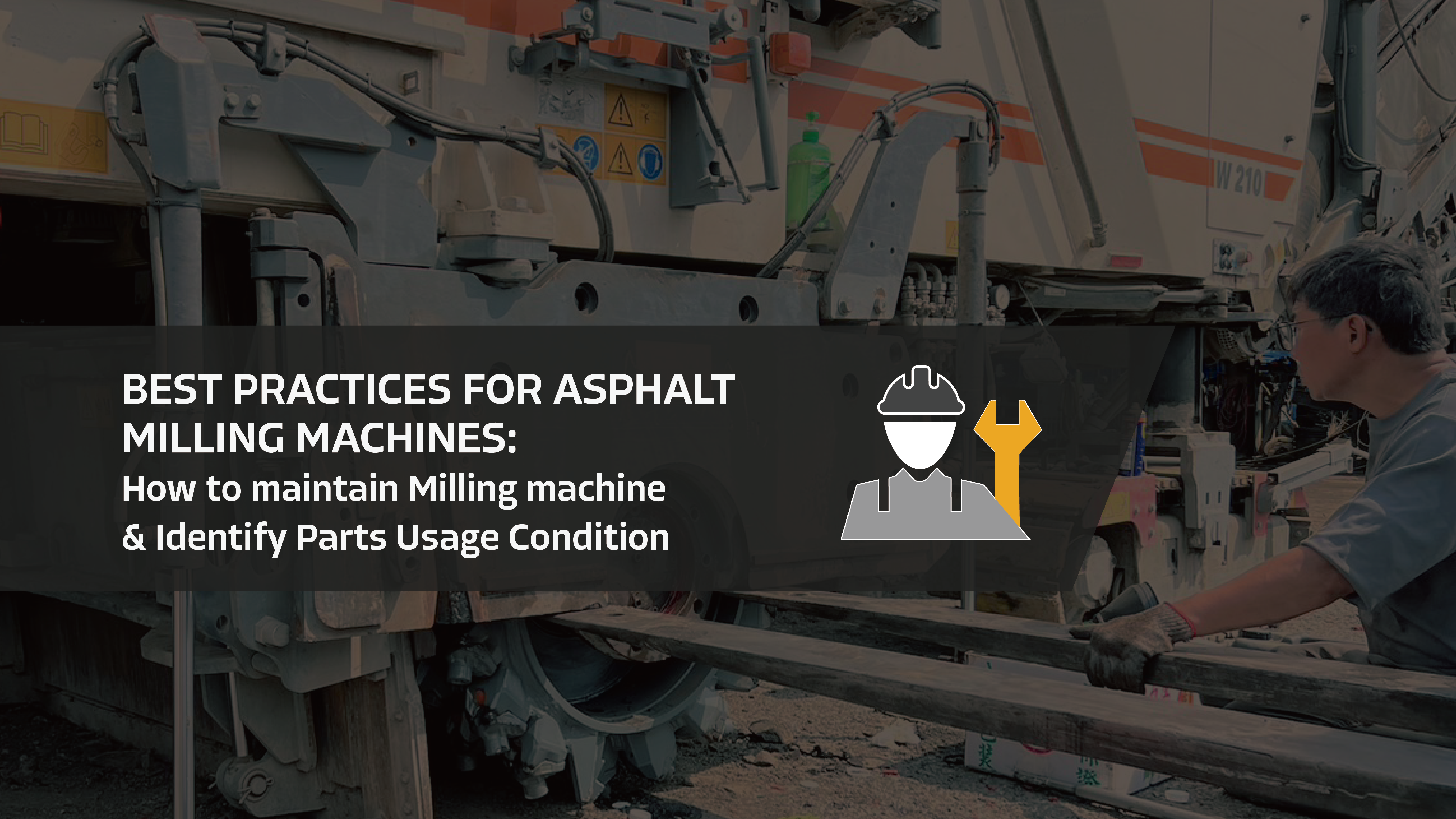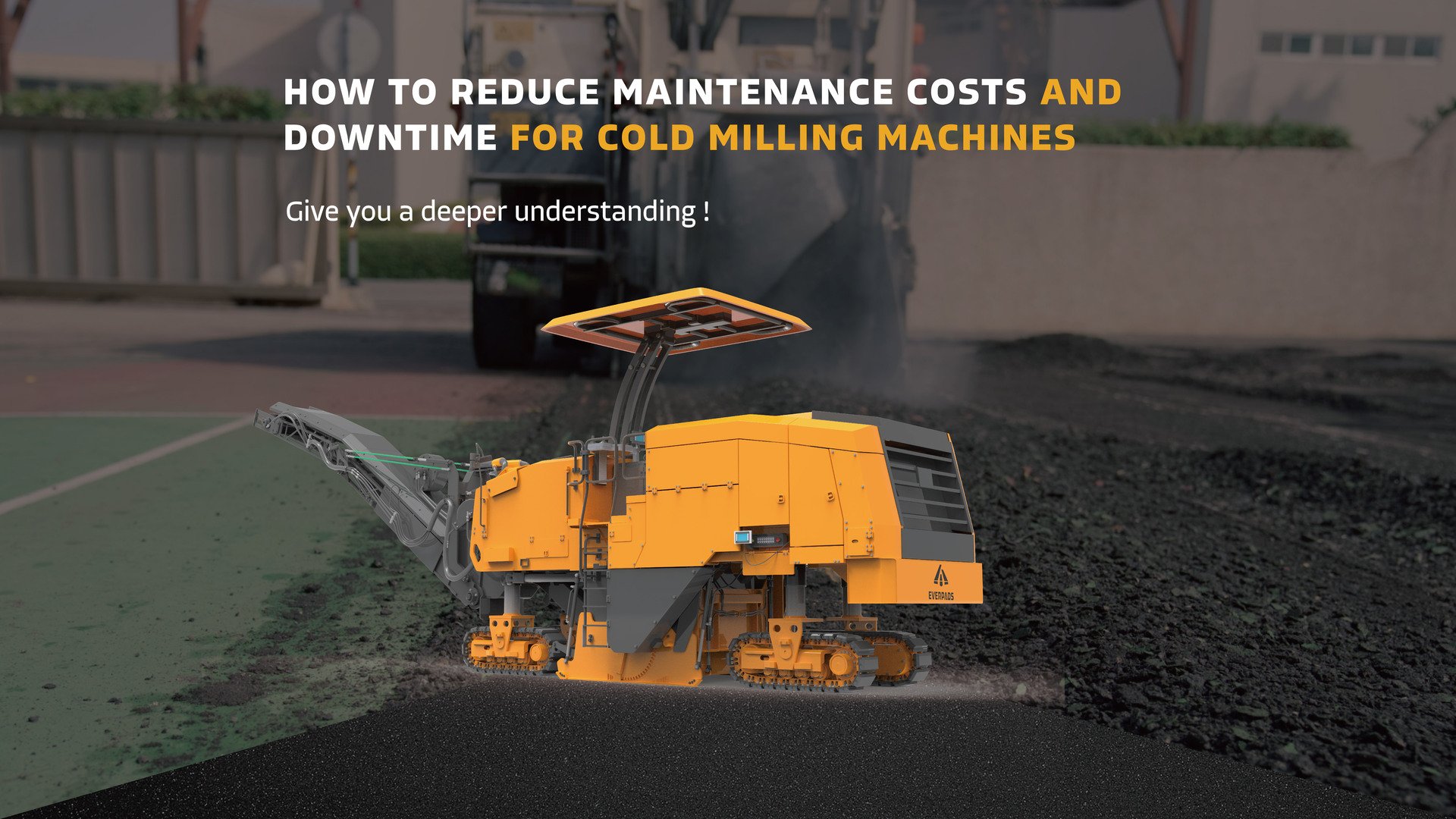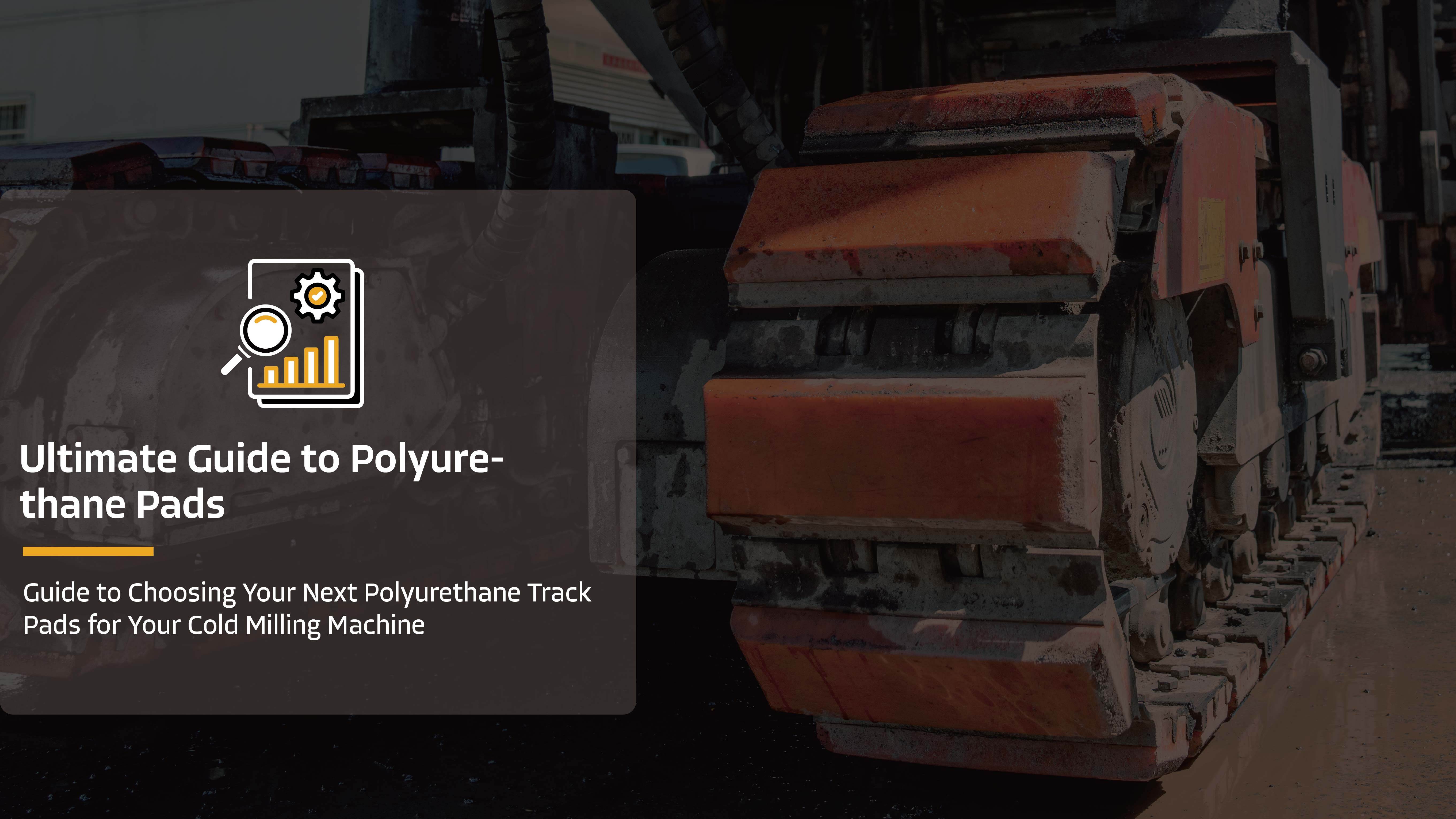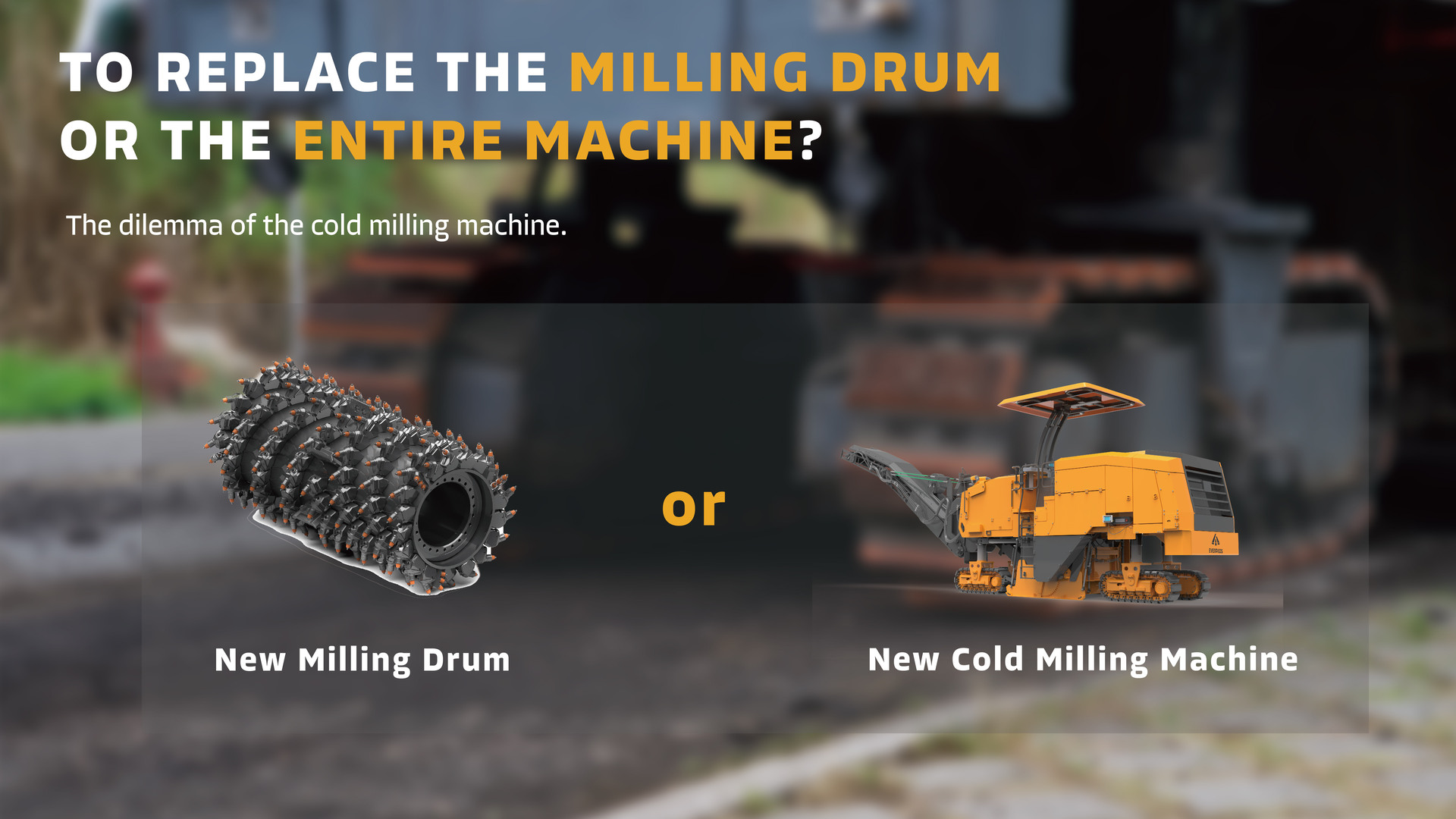Benjamin Franklin's saying, "An ounce of prevention is worth a pound of cure," is a simple but powerful reminder for operation in the asphalt paving industry. It's all about the importance of regular maintenance after choosing the right machine. By keeping your machines in top condition, you're not just preventing future problems but also saving money and time in the long run.
This guide will dive into the essential maintenance practices for Cold Milling Machines, offering you the blueprint to boost your asphalt milling profits by embracing Franklin's timeless advice.
- Embrace maintenance to minimize downtime and maximize output.
- Adhere to regular maintenance for longer machine life and higher resale value.
- Ensure machines are reliable and avoid unexpected failures with consistent upkeep.
- Learn and apply industry-specific maintenance techniques.
- Keep equipment in excellent condition to enhance safety and compliance.
Importance of Asphalt Milling Machine Maintenance
V3%20%5BTOF%5D%20Draft_April%20W1-1.png?width=1725&height=359&name=(FINAL%20DRAFT)V3%20%5BTOF%5D%20Draft_April%20W1-1.png)
Enhancing Efficiency
Preventing Unexpected Breakdowns
Prolonging Machine Lifespan
How Much Can You Really Gain from Proactive Maintenance?
Comprehensive Maintenance Guide for Asphalt Milling Machines
Identifying and Replacing Worn-Out Parts
Milling System:
V3%20%5BTOF%5D%20Draft_April%20W1-2.png?width=1707&height=766&name=(FINAL%20DRAFT)V3%20%5BTOF%5D%20Draft_April%20W1-2.png)
Side Note: Explore details in the comprehensive guide of our blog: 5 Typical Road Milling Teeth Wear & Tear: Tips for Maintenance Based on Wear Pattern.
V3%20%5BTOF%5D%20Draft_April%20W1-3.png?width=1707&height=835&name=(FINAL%20DRAFT)V3%20%5BTOF%5D%20Draft_April%20W1-3.png)
- They can't maintain a 450 Nm torque with the base until 500 hours, which means the contact area with the base is worn and requires replacement.
- The wear indicator lines on the tool holder surface were reduced to one, signaling the need for replacement.
- Uneven or angled wear is observed, which can affect milling quality, indicating suboptimal function.
- The welded tool base can no longer securely hold the milling teeth, suggesting the need for an upgrade.
Conveyor System:
Inspect the conveyor belts regularly for wear from the abrasive milled material and replace them as needed.
Conveyor belt wear check:
it should be replaced when the threads are invisible.
Undercarriage System:
Track pads, being in constant contact with the ground, wear out and need periodic replacement.
Poly track pads or rubber track pads wear check:
Replacement should be carried out before the bars of the steel base plate become visible.
Track Roller:V3%20%5BTOF%5D%20Draft_April%20W1-4.png?width=472&height=231&name=(FINAL%20DRAFT)V3%20%5BTOF%5D%20Draft_April%20W1-4.png)
Inspect for oil leakage, a sign that replacement is needed. Additionally, assess the wear on the rollers to determine if they're beyond their service life.V3%20%5BTOF%5D%20Draft_April%20W1-5.png?width=2658&height=1876&name=(FINAL%20DRAFT)V3%20%5BTOF%5D%20Draft_April%20W1-5.png)
V3%20%5BTOF%5D%20Draft_April%20W1-6.png?width=398&height=200&name=(FINAL%20DRAFT)V3%20%5BTOF%5D%20Draft_April%20W1-6.png)
Sprocket wear check: Look for signs of idling or slipping, indicating it's time for a replacement to maintain effective power transmission.
Idler roller wear check: Idler is not high frequently replace parts. Expert suggest it should be replaced with the tack chain.
Track Chain:V3%20%5BTOF%5D%20Draft_April%20W1-7.png?width=1804&height=870&name=(FINAL%20DRAFT)V3%20%5BTOF%5D%20Draft_April%20W1-7.png)
Track chains extend with use, measurable by table specs. Since they match the drive sprocket's profile, which wears over time, replace both the sprocket and chain together if needed.
V3%20%5BTOF%5D%20Draft_April%20W1-8.png?width=2361&height=1606&name=(FINAL%20DRAFT)V3%20%5BTOF%5D%20Draft_April%20W1-8.png)
V3%20%5BTOF%5D%20Draft_April%20W1-9.png?width=2361&height=1606&name=(FINAL%20DRAFT)V3%20%5BTOF%5D%20Draft_April%20W1-9.png)
V3%20%5BTOF%5D%20Draft_April%20W1-10.png?width=491&height=218&name=(FINAL%20DRAFT)V3%20%5BTOF%5D%20Draft_April%20W1-10.png)
Filtration System:
Keep air, fuel, and oil filters clean and replace them at set intervals to ensure the engine runs smoothly.
Transmission and Drive Systems:
Regularly check seals and bearings. Seals keep out contaminants, while bearings reduce friction; both are crucial for the machine's integrity.
Hydraulic and Electrical Systems:
Though less frequently replaced, hydraulic lines and electrical wires should be regularly inspected for leaks or damage to prevent operational failures.
5 Main Fields of Milling Machine Maintenance
1. Routine Machine Check-ups
V3%20%5BTOF%5D%20Draft_April%20W1-11.png?width=1725&height=359&name=(FINAL%20DRAFT)V3%20%5BTOF%5D%20Draft_April%20W1-11.png)
- Milling Drum Care: The milling drum, being central to the machine's operation, demands regular checks. Any sign of wear, damage, or misalignment can significantly impact performance. It's vital to ensure that the drum is in prime working order to maintain production quality.
- Kicker Paddle Maintenance: These paddles(Wall aligned by bases and Ejector) facilitate material flow from the drum. Ensuring they are present and in good condition is crucial to prevent material buildup, reducing wear on the machine.
- Conveyor Belt Unobstructed: Material stuck in the housing can damage the conveyor belt, impeding operation. Regular inspections can prevent such issues, ensuring continuous milling activity.
2. Optimizing the Spray System
- Effective Water Use: Water serves as a coolant and lubricant, crucial for dust suppression and preventing component buildup. The expert recommends a balanced approach, using a capful of liquid laundry soap to maintain optimal moisture without causing foaming or tack coat damage.
- Segmented Water Bars: Leveraging the technology in newer machines, operators can control water distribution, preventing excessive application and ensuring the milled surface is prepared for immediate follow-up work.
3. Critical Maintenance of Milling Teeth and Holders
V3%20%5BTOF%5D%20Draft_April%20W1-12.png?width=1725&height=359&name=(FINAL%20DRAFT)V3%20%5BTOF%5D%20Draft_April%20W1-12.png)
- Regular Teeth Checks: Given the intense conditions under which milling teeth operate, inspecting them for wear and replacing them promptly is essential. This not only preserves the teeth but also protects the holders from damage.
- Angle of Attack and Holder Integrity: A misaligned tooth can wear out rapidly, compromising the milling pattern. Ensuring that new teeth are correctly installed and holders are in good condition is crucial for uniform milling results.
- Spare Parts Management: Having a set of spare teeth and holders, especially when operating in remote locations, can prevent downtime.
4. Preparing for Quality Milling
- Pattern Consistency: A uniform pattern behind the machine is indicative of proper tooth and holder maintenance. Mixing new and old components can lead to inconsistent milling depths and patterns.
- Strategic Component Refresh: For different projects (e.g., residential streets vs. interstate projects), consider reracking the drum with teeth that match the wear pattern for the specific job.
- Emergency Preparedness: Always have spare teeth and holders ready. Being unprepared for replacements can lead to operational halts and increased costs.
Summary
Frequently Asked Questions
- Inspection Frequency: A basic daily inspection is recommended, with more in-depth checks at regular intervals to catch any potential issues early.
- Choosing Lubricants: Always opt for the manufacturer-recommended lubricant to ensure compatibility and optimal performance.
- Part Replacement Timing: Monitor parts for wear or damage and replace them promptly to avoid further machine stress or failure.
- DIY Repairs vs. Professional Service: While operators can perform routine maintenance, more complex repairs should be entrusted to experienced technicians to ensure the work is done correctly.
- Importance of Operator Training: Proper training is vital. It not only prevents machine damage but also significantly reduces safety risks.
By focusing on these practices and addressing common queries, you can maintain operational excellence and safeguard your investment in asphalt milling equipment.
.png?width=698&height=417&name=%E5%AE%98%E7%B6%B2logo%20(1).png)






